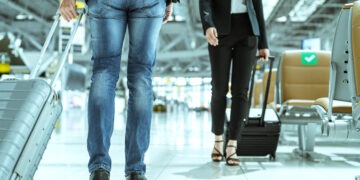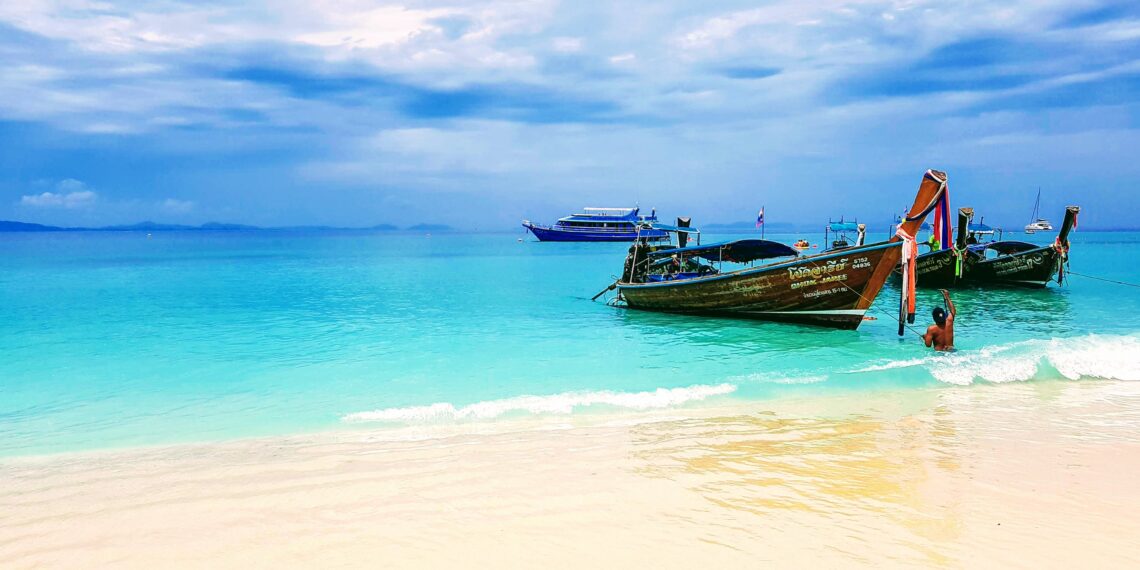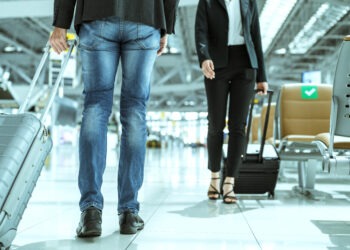As the calendar inches towards November, it’s time to start planning your next adventure, and what better place to explore than the charming and colourful region of South East Asia. With a vibrant mix of rich traditions, stunning landscapes, and mouthwatering cuisine, this region offers the perfect getaway for travellers of all kinds. Whether you’re a solo trekker, a family explorer, or a couple seeking adventure, South East Asia is a holiday destination you have to visit at least once in your lifetime.
Not forgetting, it’s already the month of November right now, many of you probably have last minute travel plans while reading this. So, if you’re thinking of jetting off to South East Asia tomorrow or in the next few days, this article also shares Budget Tips and Hacks (jump to section) especially for holidaying in the region at this time of year — last minute.
Public Holidays (jump to section): South East Asian countries probably have the most public holidays or bank holidays ever. If you happen to visit during one of these holidays, it does change a few things. So, we’ve listed down tips and hacks in this article on how you can make your holiday better by working these local public holidays into your vacation itinerary; even work around these local public holidays if that’s where you’re coming from.
This article will guide you through the best destinations to visit in November 2023 in South East Asia, where you can enjoy ideal weather, smaller crowds, and budget-friendly accommodations. So, before starting on your packing, let’s help you plan a trip that’s memorable.
South East Asia Affordable Holidays for November 2023
When it comes to vacationing as a seasoned or new traveller, South East Asia has been the holiday destination of choice for many holiday seekers, and for good reason. Diverse, affordable and exciting are just a few of the many reasons. Here, you’ll find out why the ASEAN region has the best destinations to visit in November 2023, and gain some insight into why these places are ideal during this time. Don’t forget, we’ll also offer tips on finding budget-friendly accommodations and activities for a memorable trip.
- Luang Prabang, Laos
Luang Prabang is a hidden gem in Laos, nestled between the Mekong River and the Nam Khan River. November brings a break from the monsoon season, revealing the town’s lush greenery in all its glory. The cool, crisp air in the mornings is perfect for exploring the serene Buddhist temples, while the daytime warmth allows for scenic hikes. Luang Prabang exemplifies authentic South East Asian culture, making it a must-visit.
After a rainy few months, November marks the perfect time to visit Luang Prabang and neighbouring gems. With delightful weather and fewer tourists, Luang Prabang is a fantastic bargain. You can find comfortable 3-star hotels for two people starting from just $31 in November and dorm beds from $7 per person.
Backpacker Index 2023 – USD 19.84
Weather: November avg high: 84°F/29°C, November avg low: 64°F/18°C, November avg precip: 1.1″/2.8cm.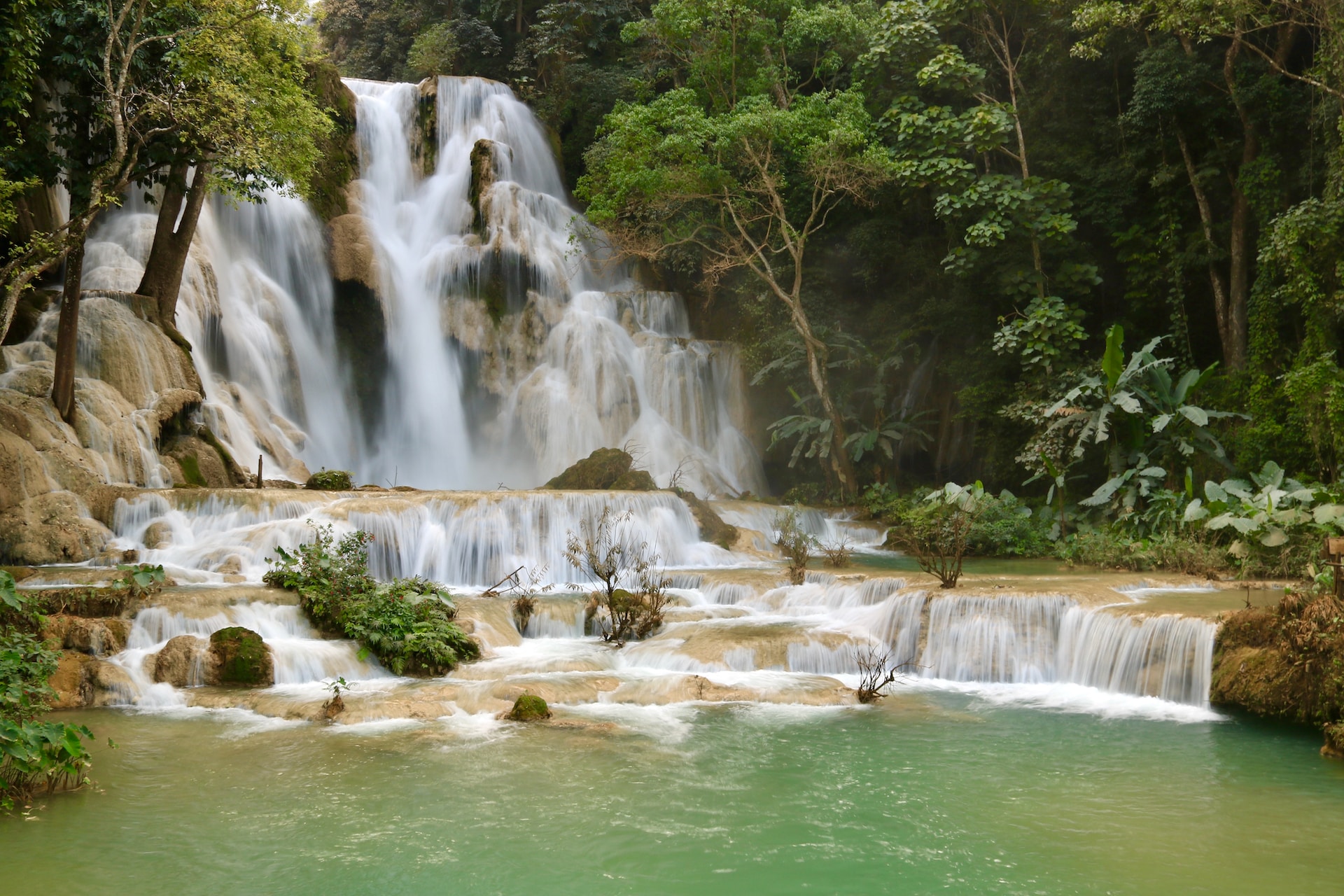
- Chiang Mai, Thailand
Chiang Mai is a treasure trove of culinary delights. The city comes alive in November with its annual Yi Peng Lantern Festival, a sight to behold. The cooler weather allows for easy exploration of the city’s bustling markets and street food stalls. Chiang Mai is known for its budget-friendly accommodations, and the delicious Thai cuisine won’t break the bank either. From pad Thai to green curry, your taste buds will thank you.
Chiang Mai, with its pleasant weather and smaller crowds in November, is a must-visit destination. Known as one of Asia’s best travel bargains, Chiang Mai offers an abundance of outdoor activities and hikes. You can find 3-star hotels for two people from just $19. If you’re willing to spend more on a good 4-star hotel, it will cost you $40 for two people and for those on a tight budget, a dorm bed is $6 per person.
Backpacker Index 2023 – USD 22.05
Weather: November avg high: 86°F/30°C, November avg low: 66°F/19°C, November avg precip: 2.1″/5.3cm.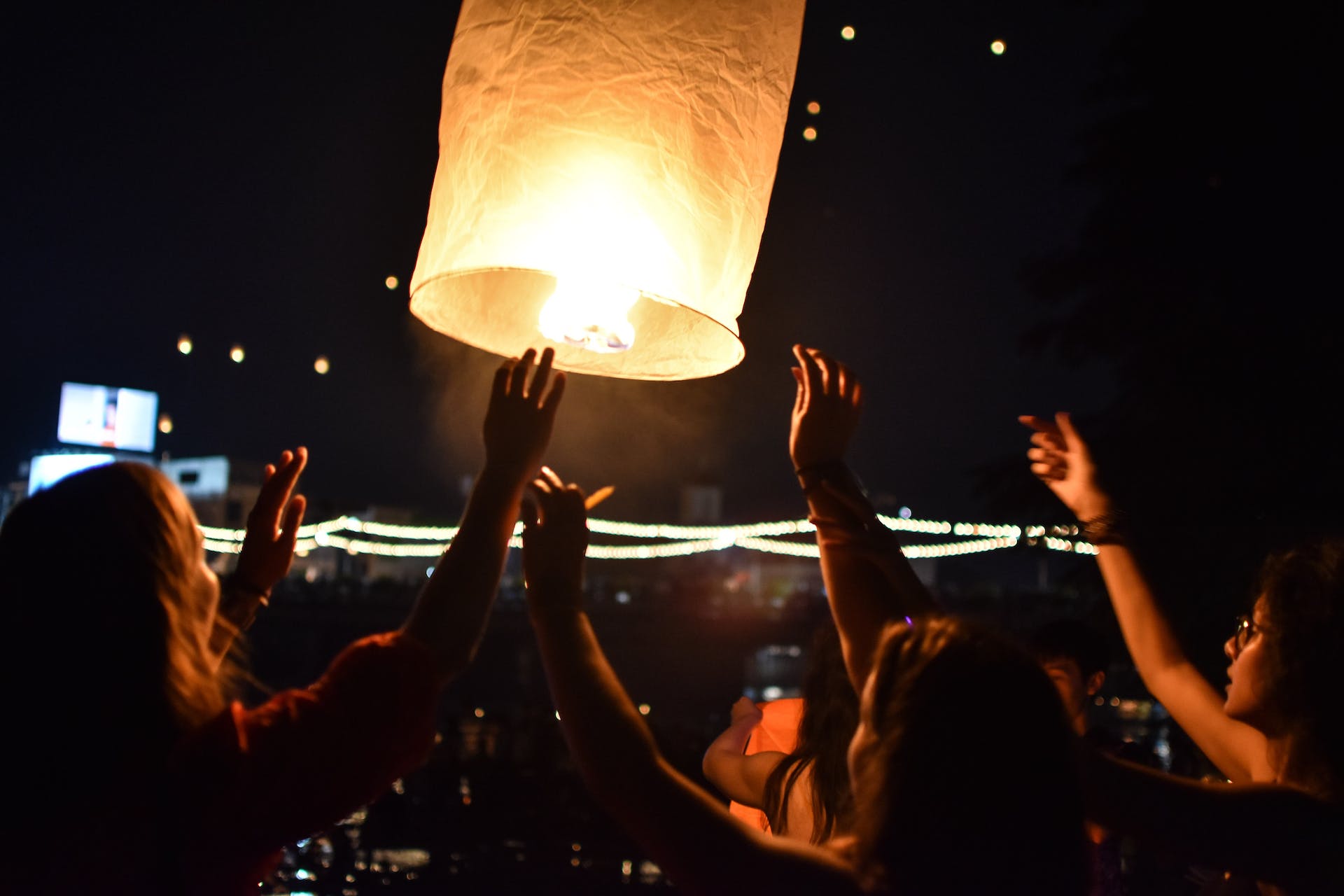
- Hanoi, Vietnam
Vietnam’s capital of Hanoi boasts a rich history and a unique charm. The pleasant November weather invites travellers to explore the city’s ancient temples, the bustling Old Quarter, and the serene Hoan Kiem Lake. The city offers a mix of French colonial architecture and Vietnamese culture, making it a captivating destination. With budget-friendly hotels starting at just $12, Hanoi is both captivating and affordable.
Hanoi is a fascinating city to explore indeed. Its pleasant weather in November and budget-friendly accommodations make it a welcome addition to your South East Asia trip. A 4-star hotel here is priced at around $40 for two people and a good 3-star hotel for two people starts from only $12. Meanwhile, a hostel dorm bed is priced at $5 per person.
Backpacker Index 2023 – USD 22.49
Weather: November avg high: 76°F/24°C, November avg low: 66°F/19°C, November avg precip: 1.6″/4.0cm.
- Bali, Indonesia
Bali, despite the start of the rainy season in November, offers the first half of the month with dry weather. The island is renowned for its lush landscapes, vibrant culture, and enchanting temples. After the pandemic, Bali is making a comeback, offering fantastic deals on accommodations. With 3-star hotels starting at just $18 for two, it’s a chance to experience the magic of Bali on a budget. 4-star hotels go for slightly more from $23 onwards for two people and if you don’t mind putting up at a hostel, dorm beds go for $7 per person.
Backpacker Index 2023 – USD 28.65
Weather: November avg high: 87°F/31°C, November avg low: 78°F/26°C, November avg precip: 6.1″/15.3cm.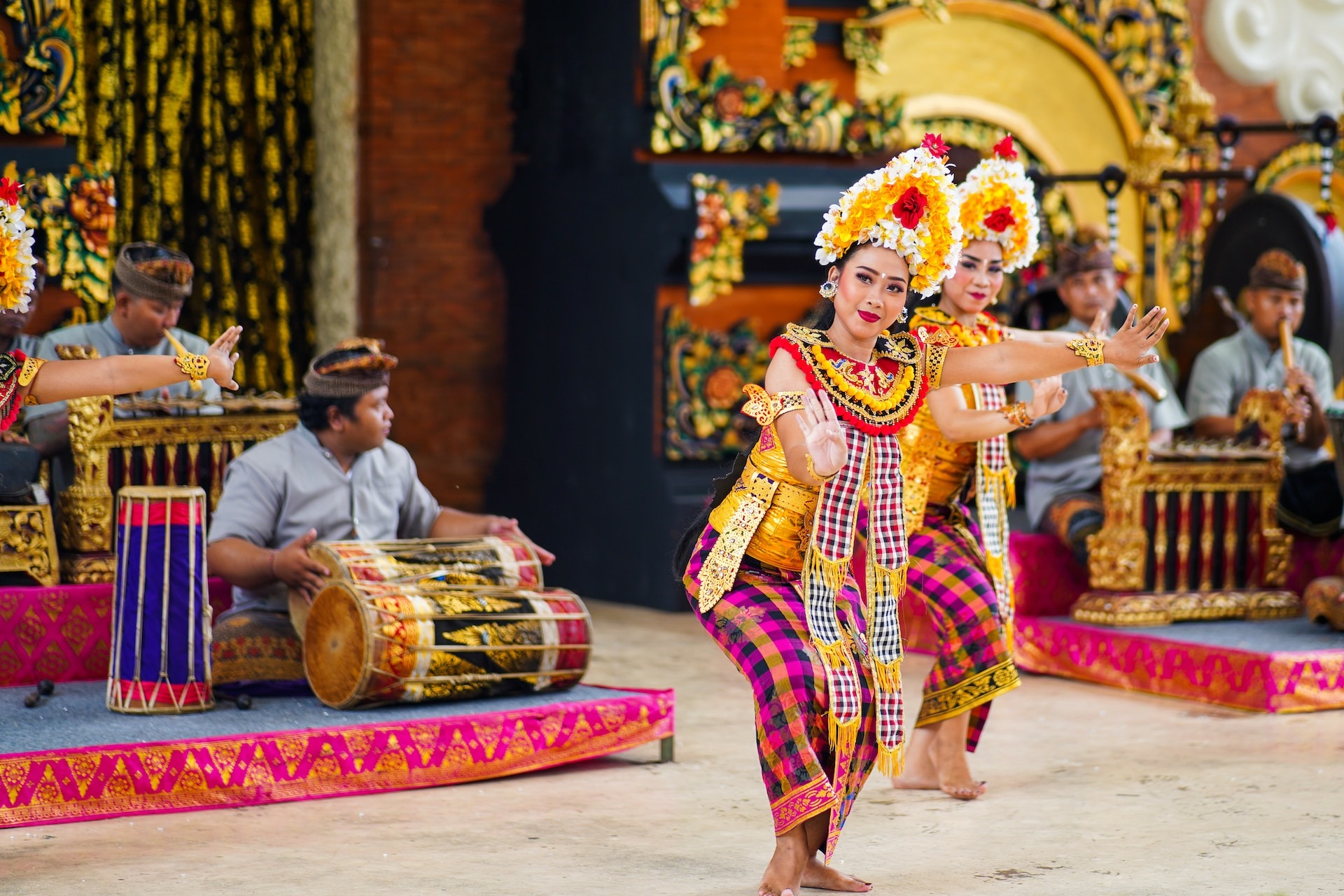
- Siem Reap, Cambodia
Siem Reap is a gateway to the mesmerising Angkor Wat temple complex, a UNESCO World Heritage site. November offers pleasant weather and fewer tourists, making it an excellent time to explore these historic wonders. The temples, each with its own story, are a testament to the Khmer Empire’s grandeur.
With pleasant weather and fewer tourists in November, it’s an excellent time to enjoy this historic site. Economical 3-star hotels from $18 for two provide a comfortable temporary roof over your head as you go about your vacation, and 4-star hotels are a bit pricier at around $27 for two people. The ardent backpacker has a choice too in the more economical hostel lodging for $5 per person.
Backpacker Index 2023 – USD 29.04
Weather: November avg high: 89°F/32°C, November avg low: 73°F/23°C, November avg precip: 2.0″/5.0cm.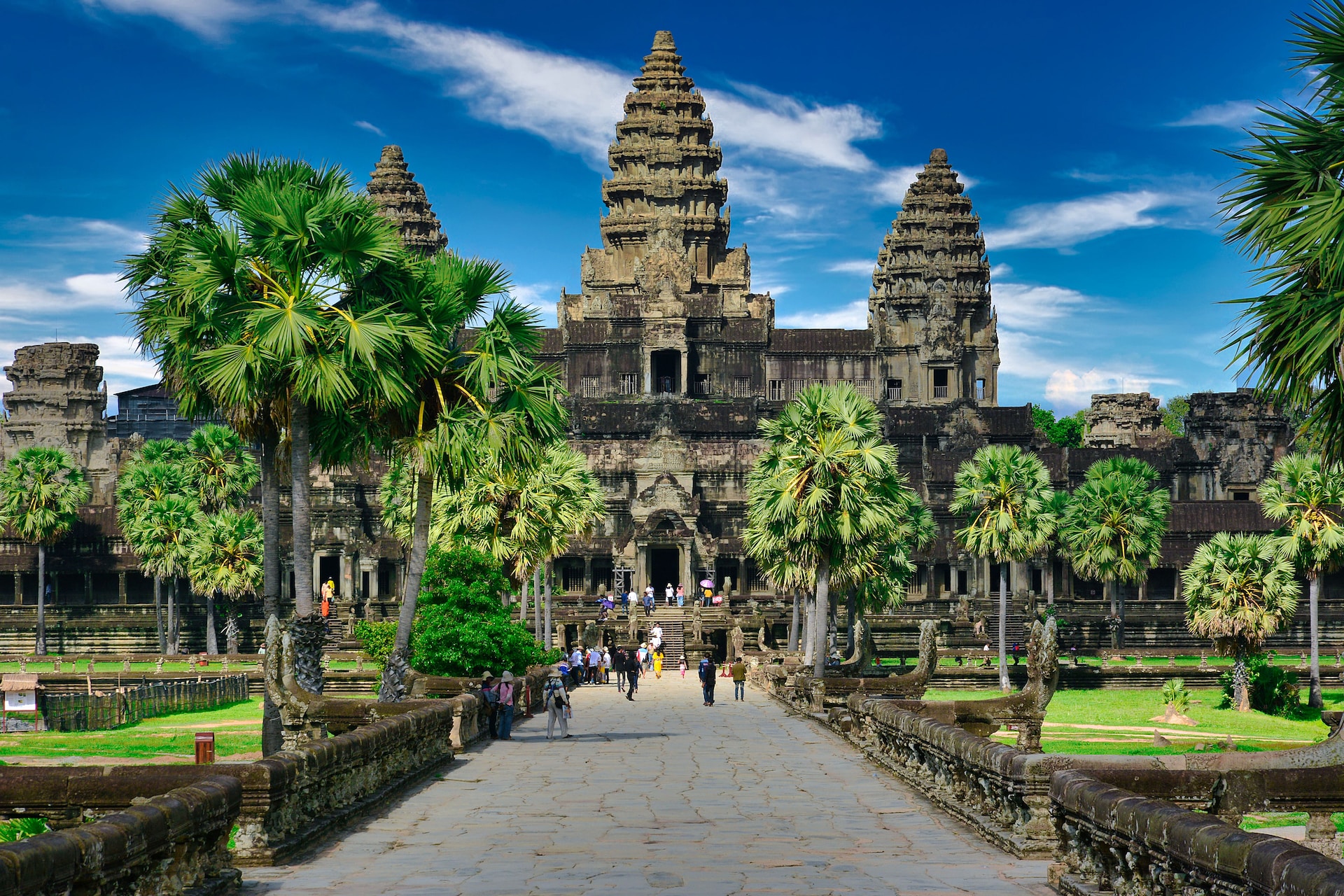
- Phuket, Thailand
Phuket, while experiencing some rain in November, still offers a budget-friendly beach vacation. With beautiful beaches, vibrant nightlife, and water activities, Phuket has something for everyone. It’s advisable to visit in the latter part of the month when the rains subside.
While Phuket sees some rain in November, it’s still a good time to visit if you’re looking for a budget-friendly beach vacation. Phuket is admittedly the more expensive of South East Asia holiday spots but you can find comfortable 3-star hotels for two people from just $20; 4-star hotels from $35 and a dorm bed for $11 per person.
Although taking all things into consideration, Phuket is more ideal for an affordable premium holiday because of the smaller price range. Dorm beds in Phuket are exorbitantly priced compared to others.
Backpack Index 2023 – USD34.66
Weather: November avg high: 88°F/31°C, November avg low: 75°F/24°C, November avg precip: 6.9″/17.3cm.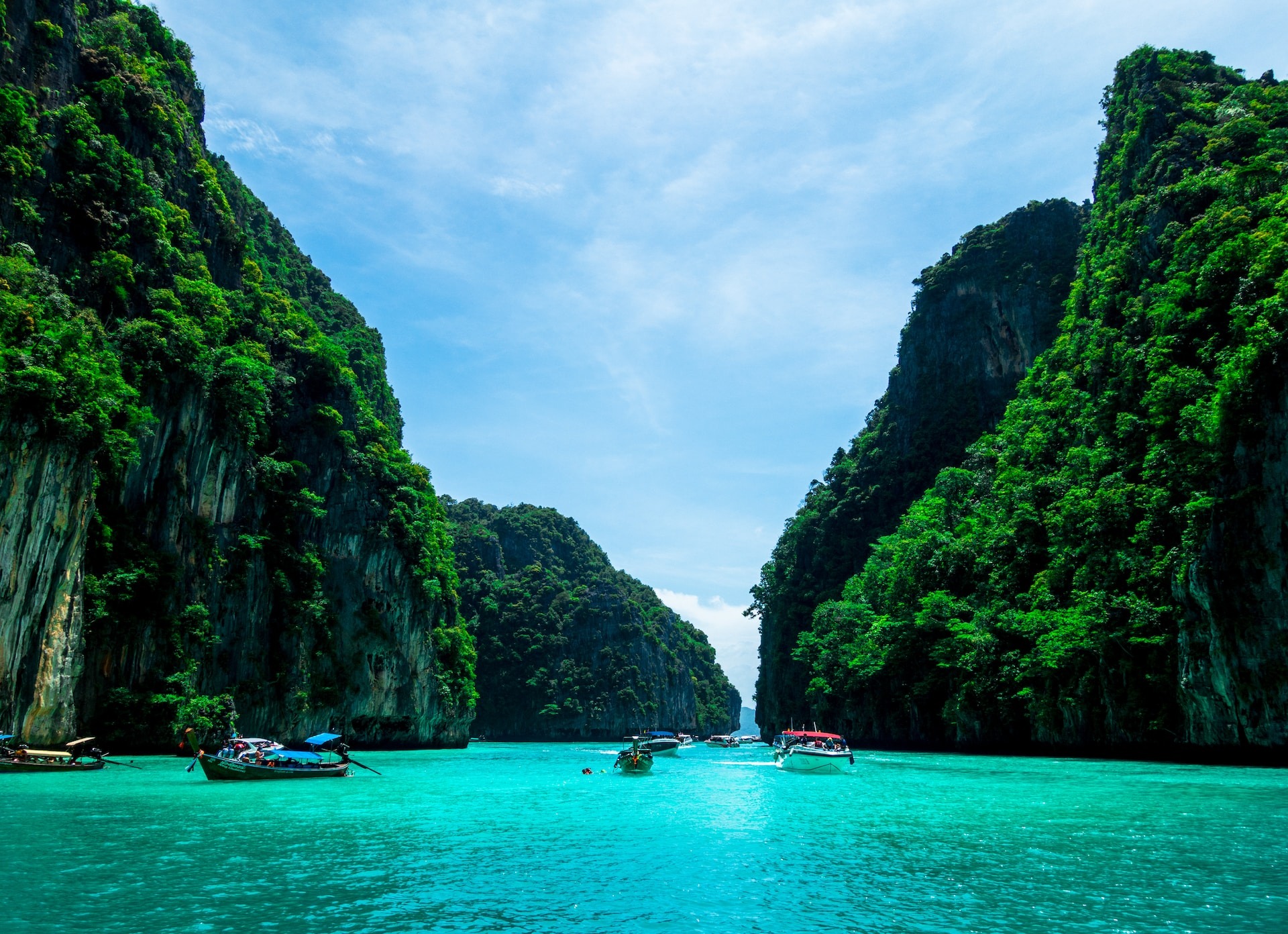
November 2023 in South East Asia: Celebrate with the Locals
(Back to intro)
South East Asia in November is a fantastic time to visit. Not just the pleasant weather but the wealth of cultural celebrations, will add to your holiday especially when celebrating with the locals. A way to get into the shoes of your hosts as much as possible, you can now say more for your holidays than just living vicariously when simply making pit stops for holidays.
Here are some of the public holidays celebrated across South East Asia in November:
Loy Krathong in Thailand: Floating Lanterns
Loy Krathong, celebrated on the full moon night in November, is a time when Thais release intricately decorated banana-leaf boats (krathongs) into rivers and waterways, symbolising the letting go of negativity and paying respect to the water goddess. Visiting Thailand during this festival offers a unique cultural experience. You can join locals in crafting your krathong and releasing it on the water. The sight of thousands of lanterns floating on the river is truly enchanting.
Water Festival in Cambodia: A Splash of Fun
In Cambodia, the Water Festival, or Bon Om Touk, takes place in November. It’s a lively celebration featuring boat races, traditional performances, and water splashing. Incorporate this festival into your travel plans by attending the boat races on the Tonlé Sap River or joining the cheerful water fights with the locals. It’s a fantastic opportunity to immerse yourself in Cambodian culture while staying refreshed in the tropical heat.
Yi Peng Lantern Festival in Chiang Mai, Thailand: A Sky Full of Dreams
The Yi Peng Lantern Festival in Chiang Mai is a magical event celebrated in November. It involves releasing thousands of sky lanterns into the night sky, symbolising the release of worries and hopes for a better future. Planning your visit to Chiang Mai during this festival is a chance to witness a speckled, lantern filled sky. You can even participate by releasing your lantern, making your wishes and dreams take flight.
Loy Krathong in Laos: A Serene Celebration
Laos also celebrates Loy Krathong, known locally as Boun Heua Fai, with its own unique twist. The festival is marked by colorful processions and illuminated boats. Incorporate this celebration into your Laos trip by witnessing the processions in cities like Luang Prabang or Vientiane. The serene Mekong River serves as a perfect backdrop for these enchanting events.
Deepavali in Malaysia: Festival of Lights
Deepavali, known as Diwali in India, is also celebrated in Malaysia, particularly in regions with a significant Indian community. It’s a time when homes and streets are adorned with colourful oil lamps and vibrant decorations. While in Malaysia, explore areas like Penang and Kuala Lumpur to experience the lively atmosphere and savour delicious Indian cuisine.
Bon Om Touk in Vietnam: Water Lantern Festival
Vietnam celebrates a variation of the Water Festival, known as Bon Om Touk, particularly in the Mekong Delta region. During this time, you can witness breathtaking water lantern displays and boat races. Incorporate this into your Vietnam travel plans for a unique experience along the country’s picturesque waterways.
Christmas Preparations in the Philippines
In the Philippines, November marks the beginning of the festive season as Christmas preparations kick off. The country is known for having one of the longest Christmas celebrations in the world. You can join locals in early Christmas shopping, admire the colorful parol lanterns, and attend Simbang Gabi, the nine-day pre-dawn Mass.
November 2023 in South East Asia offers a remarkable blend of cultural celebrations and pleasant weather, making it an ideal time for a memorable journey. You might consider coinciding your travel dates with some of these public holidays to make it a more meaningful and memorable holiday. Whether you’re partaking in the Festival of Lights in India, floating lanterns in Thailand, or joining water festivities in Cambodia, you’re in for an unforgettable adventure.
Budget Tips and Hacks
(Back to intro)
Planning a last-minute impromptu trip to vibrant South East Asia in November 2023? Don’t worry about breaking the bank. Here are a few of the best budget tips and hacks to avoid any hiccups on your holiday as much as possible.
Flexible Travel Dates
Booking last-minute flights can be more budget-friendly if you’re flexible with your travel dates. Use fare comparison websites and apps to find the best deals. Sometimes, flying mid-week or during off-peak hours can save you a significant amount.
Imagine you’ve decided to explore the beautiful beaches of Bali in November. By being flexible with your travel dates, you discover that flying on a Tuesday instead of the weekend can save you a significant amount on airfare. This flexibility enables you to allocate those savings to other aspects of your trip.
Accommodation Options
Consider budget-friendly accommodation options like hostels, guesthouses, and home-sharing platforms. They often provide a comfortable stay without the high price tag of luxury hotels. Plus, these choices offer a chance to connect with fellow travellers and locals.
Let’s say instead of booking an expensive hotel, you opt for a cozy guesthouse in Chiang Mai, Thailand. Not only is it budget-friendly, but the friendly owner provides you with insider tips on the best local eateries and hidden attractions, enhancing your overall travel experience.
Indulge in Street Food
Embrace the local food scene by trying street food. South East Asia is renowned for its delectable street eats that won’t burn a hole in your pocket. Sample dishes like Pad Thai in Thailand or Pho in Vietnam from street vendors for a taste of authentic cuisine.
For instance, while exploring the bustling streets of Hanoi, Vietnam, you stumble upon a local street food vendor serving piping hot bowls of pho. For just a few dollars, you enjoy a delicious, steaming bowl of this iconic Vietnamese dish. It’s not only cost-effective but also an authentic culinary adventure.
Public Transportation
Utilise public transportation to get around. Trains, buses, and tuk-tuks are not only cost-effective but also provide a more immersive travel experience. Skip the expensive taxis and explore the local way.
If in Bangkok, Thailand, you choose to explore the city by using the efficient BTS Skytrain and MRT subway systems, it can lessen the dent in your wallet. Not only do these options save you money, but they also allow you to bypass the notorious traffic jams that taxis often get stuck in.
Travel Light
Packing light can save you money on baggage fees and make your journey more manageable. Plus, it allows you to be more mobile, especially if you’re planning to explore multiple destinations in South East Asia.
This is especially true for when visiting multiple countries on your South East Asia holiday. By packing light and using a backpack, you avoid luggage fees and effortlessly navigate airports, buses, and ferries, ensuring that your trip remains cost-effective and hassle-free.
Local Excursions
Instead of booking tours through international agencies, opt for local excursions. They’re often more affordable, and you’ll be supporting the local economy. Negotiate prices if necessary, but always be fair to the providers.
For example, in Siem Reap, Cambodia, you book a temple tour with a local guide instead of a big international tour company. The local guide not only provides an enriching experience but also charges a reasonable fee, ensuring that your exploration of Angkor Wat is both educational and budget-friendly.
Bargaining Skills
Haggling is a common practice in many South East Asian markets. Polite negotiation can help you secure souvenirs, clothing, and other items at a lower cost. Just remember to maintain a friendly and respectful attitude.
While shopping for handmade crafts in a bustling market in Ubud, Bali, you engage in friendly haggling with a vendor. Respectfully negotiating with the vendor will more likely end up in a fair price for a beautifully crafted souvenir.
Stay Hydrated and Avoid Bottled Water
Some places charge a premium for basic necessities such as something as basic as a bottle of water. Keep a refillable water bottle with you to stay hydrated. Buying bottled water can add up over time. Many places offer water refilling stations or purified water, which is not only cost-effective but also eco-friendly.
Tourists have been known to do this as they explore the temples of Bagan, Myanmar: bringing a reusable water bottle. You could to the same and refill at water stations found throughout the archaeological zone. This not only saves you money but also contributes to reducing plastic waste in this historically significant area.
Explore Off-the-Beaten-Path Destinations
While popular destinations are attractive, exploring lesser-known places can be rewarding and easy on your bank account. You’ll often find fewer crowds and more affordable options.
In Laos, instead of visiting the bustling capital Vientiane, you venture to the picturesque town of Luang Prabang. Here, you enjoy the serene beauty of nature, ancient temples, and local culture without the crowds and high prices commonly associated with more touristy areas.
Currency Exchange
When exchanging currency, use local banks or official exchange offices to avoid high fees and unfavorable rates. Inform your bank about your travel plans to avoid card issues.
Before arriving in Cambodia, consider visiting a local bank to exchange your currency for Cambodian Riel. By avoiding the currency exchange booths at the airport, you receive a more favourable rate and save money that can be better spent on your adventures.
Things to Keep in Mind
Getting to South East Asia can be cumbersome to new travellers to the region. We’ve broken it down here for you.
Getting to South East Asia
By Air:
South East Asia is well-connected to the world through numerous international airports. Major airports include Bangkok’s Suvarnabhumi Airport (BKK), Singapore’s Changi Airport (SIN), and Kuala Lumpur International Airport (KUL). These hubs serve as gateways to the region and offer a variety of flight options.
By Land:
If you’re up for an adventurous journey, consider overland travel options. For instance, you can take the Trans-Siberian Railway from Europe to China, then connect to South East Asia by bus or train. Alternatively, explore the scenic routes via the Trans-Siberian and Trans-Mongolian railways, taking you through Russia, Mongolia, and China, finally leading to South East Asia.
What South East Asia is Known for
Diverse Cultures and Traditions:
South East Asia is a vibrant mosaic of cultures, each with its own unique traditions and practices. From the ornate temples of Thailand to the serene water puppetry in Vietnam, you’ll find a rich tapestry of customs to explore.
Suggestion(s): In Bali, Indonesia, immerse yourself in the enchanting Balinese dance performances, a visual treat that beautifully encapsulates their cultural essence.
Scenic Landscapes and Pristine Beaches
South East Asia is renowned for its breathtaking natural beauty. Whether it’s the emerald rice terraces of Bali, the lush jungles of Malaysia, or the white sandy beaches of the Philippines, there’s a picturesque scene for every traveler.
Suggestion(s): Discover the hidden paradise of El Nido in the Philippines, with its crystal-clear waters, limestone cliffs, and hidden lagoons.
Culinary Adventures
The region’s cuisine is a sensory delight, offering a diverse array of flavours. From the aromatic street food of Thailand to the delectable pho of Vietnam, South East Asia is a paradise for food lovers.
Suggestion(s): Don’t miss out on the authentic Pad Thai in Bangkok’s bustling street markets, a mouthwatering combination of sweet, sour, and savoury.
Handy Tips for Travelling on Your South East Asia Holiday
Embrace Local Customs and Etiquette
Respect local customs and traditions. In many countries, modest attire is appreciated when visiting temples and religious sites. Learning a few basic phrases in the local language, such as greetings and polite expressions, can go a long way in establishing rapport with the locals.
Currency and Payments
South East Asia’s currency can vary from country to country. It’s advisable to exchange some currency at the airport for immediate expenses, but ATMs are widely available. Credit cards are accepted in most tourist areas, but carrying cash is essential for places with limited card acceptance.
Health Precautions
Ensure you’re up to date with vaccinations recommended for the region. In some areas, it’s essential to take precautions against mosquito-borne diseases like dengue and malaria. Carry a basic medical kit with essentials like pain relievers and diarrhoea medication.
Bargaining Skills
Haggling is common in local markets. Approach it with a friendly attitude and remember that it’s part of the local culture. Don’t be afraid to negotiate prices, but do so respectfully.
Transportation Within South East Asia
Public transportation is usually affordable and efficient. Tuk-tuks, taxis and buses are readily available in most places. For longer journeys between countries, consider budget airlines for cost-effective travel.
Tourist Testaments on South East Asia Visit
Pros:
Adventures Amidst Nature: Tourists often express their awe at the stunning natural beauty of South East Asia, from the pristine beaches of Thailand to the lush jungles of Indonesia. Many recount their thrilling experiences of hiking through dense forests, snorkeling in crystal-clear waters, and marveling at the region’s diverse wildlife.
Cultural Immersion: Travellers frequently mention the warm hospitality and rich cultural experiences in South East Asia. They share stories of exploring ancient temples like Angkor Wat in Cambodia, participating in traditional festivals, and engaging with local communities to gain insights into the unique customs and traditions of the region.
Culinary Delights: Food enthusiasts are quick to highlight the delectable cuisine of South East Asia. They recount their encounters with street food stalls, where they indulged in spicy Thai curries, savoury Vietnamese pho, and Malaysian satay. The variety and affordability of dishes consistently earn praise.
Budget-Friendly Travel: Many visitors appreciate South East Asia’s reputation as a budget-friendly destination. They share tips on finding affordable accommodations, haggling at local markets, and enjoying cheap, yet authentic, meals without compromising on quality.
Vibrant Markets: The bustling markets of South East Asia, such as the night markets in Bangkok and the floating markets in Vietnam, are a favourite topic. Tourists relish the opportunity to shop for unique souvenirs, textiles, and handicrafts, often while enjoying the vibrant street atmosphere.
Transport Adventures: While discussing their travels, some tourists share humorous anecdotes about navigating the region’s diverse transportation options. From tuk-tuks and long-tail boats to sleeper buses and scooters, transportation in South East Asia offers its own set of adventures.
Scenic Sunsets and Beaches: South East Asia’s sunsets and pristine beaches hold a special place in the hearts of many travellers. Whether it’s watching the sun dip below the horizon in Bali or lounging on the idyllic shores of the Philippines, tourists often recount the serenity and beauty of these coastal escapes.
Cons:
Traffic and Congestion: Many tourists find the traffic in major cities of South East Asia, such as Bangkok and Jakarta, to be overwhelming and congested. Traffic jams, chaotic driving, and lack of pedestrian-friendly infrastructure can be sources of frustration.
Language Barriers: Language differences can pose challenges for travellers, particularly in more rural areas. While English is widely spoken in tourist hubs, communication can be difficult in remote locations, leading to misunderstandings and difficulties in getting around.
Scams and Touts: Some tourists report encountering scams and persistent touts in popular tourist destinations. These can range from overcharging for goods and services to misleading information about attractions.
Cultural Etiquette: Cultural differences and etiquette can sometimes lead to uncomfortable situations. Tourists may inadvertently offend locals due to unfamiliarity with local customs and traditions.
Sanitary Conditions: In certain areas, travellers express concerns about hygiene and sanitation. This includes issues with food safety, cleanliness of public restrooms, and waste management.
Overcrowding at Tourist Sites: Iconic tourist attractions like Angkor Wat, Ha Long Bay, and Bali’s beaches can get extremely crowded, detracting from the experience. Some visitors mention difficulties in enjoying these sites due to the sheer number of tourists.
Weather and Climate: Weather-related complaints include unexpected monsoons or excessive heat during certain seasons, which can affect outdoor activities and travel plans.
Bargaining and Haggling: While some enjoy the process of bargaining at local markets, others find it tiresome and feel uncomfortable negotiating prices, leading to dissatisfaction with shopping experiences.
Health Concerns: Tourists may encounter health issues, including food-related illnesses or mosquito-borne diseases. Inadequate healthcare infrastructure in some areas can exacerbate concerns.
Environmental Impact: Increasingly, travelers express worries about the environmental impact of tourism, such as plastic waste and damage to fragile ecosystems, leading to a sense of guilt or responsibility.
Conclusion
As with any place and holiday, travelling to South East Asia has its ups and downs. Generally, accounts have been more positive than not but it’s always best to consult trusted sources before venturing out on your holiday. You can start your research from this Southeast Asian Websites page found at this link.














